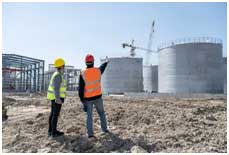Date. 2nd September 2023
In these few words as, shown there is a difference between water treatment and water conditioning. Water treatment changes the physical properties in water by adding or subtracting something to or from the water using, for example, salt basin, chemicals and reverse osmosis filters to prevent problems such as scale formation or corrosion. Water conditioning changes the characteristics in water without the introduction or subtraction of chemicals using, for example, ionization instead to prevent problems such as scale formation or corrosion.
Both have their place. But one involves either the removal of everything from the water taking with it essential minerals or the addition of a bunch of chemicals It can get the desired solution results without the addition of chemicals
The history of water treatment goes back thousands of years. There was steady progress for about 2,500 years until the fall of the Roman Empire around 500 AD. As far back as 2000 BC, ancient civilizations were using sand and gravel filtration techniques, boiling, and straining water to make it look and taste better. Appearance and smell were primary here as no one was really aware of microorganisms and bacteria.
The appearance of water is generally referred to as its turbidity which is a measure of how clear the water is. Even if it smells ok and tastes fine, very few people want to chug a glass of brown water unless it is a single malt. And if it is a single malt, one should sip it and enjoy the experience.
Other progress includes the Egyptians’ use of coagulants after 1500 BC. They applied the chemical alum for suspended particle settlement and they even recorded it in pictures on the walls of the tombs of Amenophis II and Ramses II. Along the way, improvements were made in the transportation and delivery of water to major cities the most famous of which may be the Roman aqueducts. But the awareness of microbial growth in water remained elusive until 1676 when Van Leeuwenhoek first observed water microorganisms. Then, the pace quickened so, let’s go forward.
In 1700s the first water filters for domestic water applications.
1804 the first actual municipal water treatment plant designed and built in Scotland.
1854 it was discovered that a cholera epidemic spread through water.
1890s America started building large sand filters to protect public health and water chlorination became prevalent.
1903 water softening was invented as a technique for water desalination. Cations were removed from water by exchanging them by sodium or other cations, in ion exchangers.
1914 drinking water standards were implemented for drinking water supplies in public traffic, based on coliform growth.
1940s before drinking water standards applied to municipal drinking water.
1972, the Clean Water Act was passed in the United States.
1974 the Safe Drinking Water Act SDWA was formulated. The general principle in the developed world now was that every person had the right to safe drinking water.
Starting in 1970 there was a shift from waterborne illnesses caused by disease-causing microorganisms, to water pollution from things like pesticide residues, industrial sludge, and organic chemicals. Regulation now focused on industrial waste and industrial water contamination, and water treatment plants were adapted. Techniques such as aeration, flocculation, and active carbon adsorption were applied. In the 1980s, membrane development for reverse osmosis was added to the list. Risk assessments were enabled after 1990. Water treatment today includes a heightened focus on disinfection by-products which have been linked to cancer. Again, water treatment changes the physical properties and characteristics in water by adding or subtracting something to or from the water using, for example, chemicals and reverse osmosis filters. Who really wants more chemicals in what they put in their body? And reverse osmosis also removes essential minerals.
This isn’t to say that water treatment is bad, it is a tricky science to stay out in front of the host of problems confronted while providing safe and drinkable water and it isn't getting any easier. People should have access to clean and safe water regardless of geography or socio-economic conditions. So, this situation is being waged against an endlessly complex set of variables and a constantly degraded water delivery piping infrastructure.
It changes the characteristics in water without the introduction or subtraction of chemicals. Generally speaking, water conditioning will alter the existing minerals, chemicals, and contaminants from a water source without removing essential minerals or introducing chemicals.
A common result is that it counteracts hardness and prevents the buildup of limescale. IOREX, of course, goes further and drives water towards a neutral pH right around 7.3 on the scale, it significantly reduces corrosion, and, as stated above, will prevent the buildup of scale and it will remove existing scale in the pipe! and lastly, it has an antimicrobial effect. It removes the breeding ground for biofilm which inhibits the growth of biofilm and keeps nasty things like legionella from growing in your pipes.

Because, it is about ensuring the efficiency of equipment, extending the life of existing assets, and saving water in a way that is optimally sustainable. The best systems accomplish all these objectives in a way that is affordable, environmentally friendly, and safe for human consumption.
Let’s take a quick comparative look at some various treatment and conditioning systems used for corrosion control, scale control, and microbial control.

PGDCM PGDSM PGCPM MQSI SACD
Construction- Quantity Surveyor- Valuer/ Appraiser. Project Management
37 PattensenTurkeyen, Dennis Street, Georgetown, Guyana
Email. Jewelccameron55@yahoo.com